
Strange Reasons Why These 4 Doors from Around the World Shouldn't Be Opened
Door #1: The Banff Springs Hotel
Hotels often have a mysterious allure and are surrounded by puzzles. Over the years and countless visitors, stories and legends can accumulate in these establishments. One of the most famous hotels with such a history is the Banff Springs Hotel.

When delving deeper into its history and the stories whispered by its walls, there is a particular room that stands out. This enigmatic room has turned the hotel into a magnet that attracts thousands of visitors every year, each one curious about the eerie stories that surround it.
Mountain-side beauty
The majestic Fairmont Banff Springs Hotel proudly stands amidst the breathtaking mountain ranges of Banff, Canada. Nestled amidst Mother Nature's masterpieces, it offers spectacular views of Mount Rundle and the vast Bow Valley below. With its impressive height of 1,414 meters, the hotel serves as a peaceful retreat, far away from the hustle and bustle of the world below.

But it is precisely this solitude, combined with the hotel's historical charm, that also gives it a mysterious atmosphere, making it a perfect setting for legends and perhaps even some real stories of mischief and intrigue.
The hidden room
An unusual phenomenon awaits visitors on the hotel's 8th floor. As one walks along the room numbers, it becomes apparent that Room 873 is missing. Strangely, the sequence jumps directly from 871 to 875. Where Room 873 should be, there is only an inconspicuous plastered wall.

However, gently knocking on this section reveals the secret of the wall - a door is hidden behind it. The ceiling light, once a beacon for the room's entrance, now serves as silent testimony to its mysterious disappearance. But what could have prompted the hotel to erase this room from existence?
Murder in the hotel
According to legend, in 1928, Room 873 accommodated a family - a father, mother, and their young daughter. What should have been a peaceful vacation took a tragic turn when the father inexplicably took the lives of his wife and daughter before taking his own life.

The gruesome events of that night left scars on Room 873 forever. And over the years, guests began to recount disturbing experiences connected to that very room.
Haunted hotel room
Spooky stories of piercing screams at night began to spread among hotel guests. Eerie apparitions, especially that of the young daughter, allegedly haunted the corridors and briefly appeared in mirrors before disappearing once again. Concerned about its reputation and due to these incidents, the hotel decided to permanently seal Room 873.
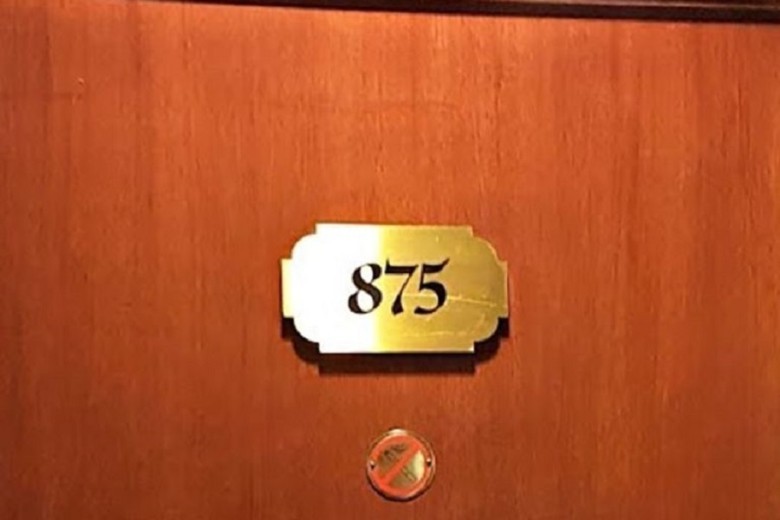
Interestingly, the eerie legend surrounding the hotel even inspired Hollywood and became the backdrop for the iconic film "The Shining." Sometimes infamy can have a strong allure.
Door #2: The Taj Mahal
If we shift our attention to another wonder, we discover a fascinating door. It is not located at the entrance of the world-famous Taj Mahal but is hidden deep within its complex architecture.

This monument, a testament to love and craftsmanship, attracts countless visitors every year, each one enchanted by its beauty and the secrets it holds.
Work of Love
Built on behalf of the Mughal Emperor Shah Jahan in 1632, the Taj Mahal stands as a monument to eternal love. It was erected in memory of Mumtaz Mahal, the emperor's beloved wife who tragically died during childbirth.

Despite her death, Shah Jahan was not alone; he had six other wives. But it was Mumtaz who inspired this architectural wonder, a building filled with artistic splendor and, as rumors suggest, some cryptic passages.
Secret chambers
Hidden from the eyes of tourists and deep within the Taj Mahal lies sealed chambers. These secluded rooms in the grand basement have remained untouched and inaccessible for almost four centuries.

The mystery deepens as even the current custodians of this world wonder are denied access to these rooms. But why? Theories abound.
The real tombs
One of the most captivating theories suggests that these hidden chambers house the real tombs of Mumtaz Mahal and Shah Jahan. The theory proposes that the tombs accessible to the public are mere replicas.
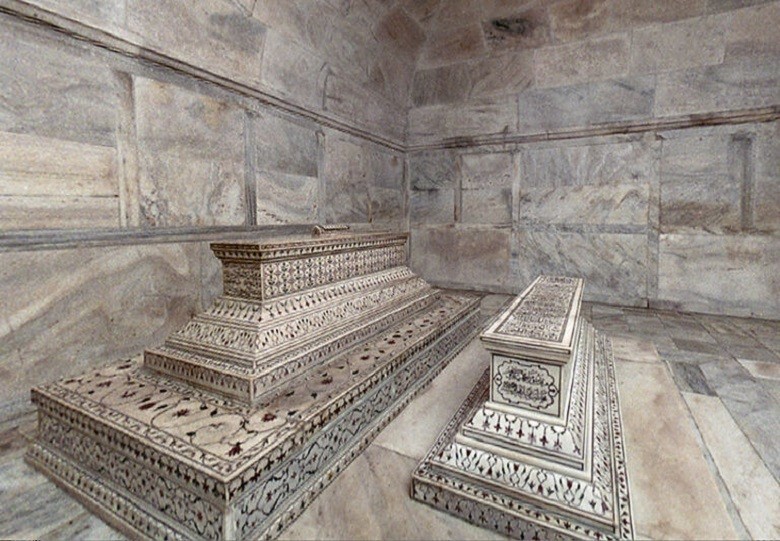
Designed to distract attention and deter tomb raiders. However, another theory rooted more in science than folklore offers a different perspective.
Weak foundation
The Taj Mahal, in all its luxury, is intricately crafted from marble. Scientifically, when marble comes into contact with carbon dioxide, it transforms into calcium carbonate. The resulting reaction causes the marble to deteriorate. Opening the sealed chambers could expose the marble's interior to the atmosphere and lead to the degradation of this iconic monument.

So, with two compelling theories at hand, which one do you lean towards? The romantic mystery of hidden tombs or the scientific caution against architectural collapse? The choice is yours.
Door #3: The Great Sphinx of Giza
Among the many wonders of ancient Egypt, the Great Sphinx of Giza holds a unique place. This monumental limestone statue with a human head on a lion's body stands as a testament to the artistic and architectural brilliance of a long-lost civilization. Its grandeur rivals the famous pyramids that tower over it.

The enigma of its origins has fascinated humanity for generations, but it wasn't until the late 19th century that the full splendor of the Sphinx was revealed. Excavations uncovered its colossal body, which had been hidden under desert sands for millennia. Who could have created this magnificent work? And are there more secrets hidden beneath its surface?
Unknown history
The puzzling origins of the Great Sphinx of Giza have divided historians and archaeologists. The prevailing opinion is that this impressive structure was created by the ancient Egyptians around 2500 BC, meaning it has existed for a proud 4,500 years - a remarkable feat by any measure.
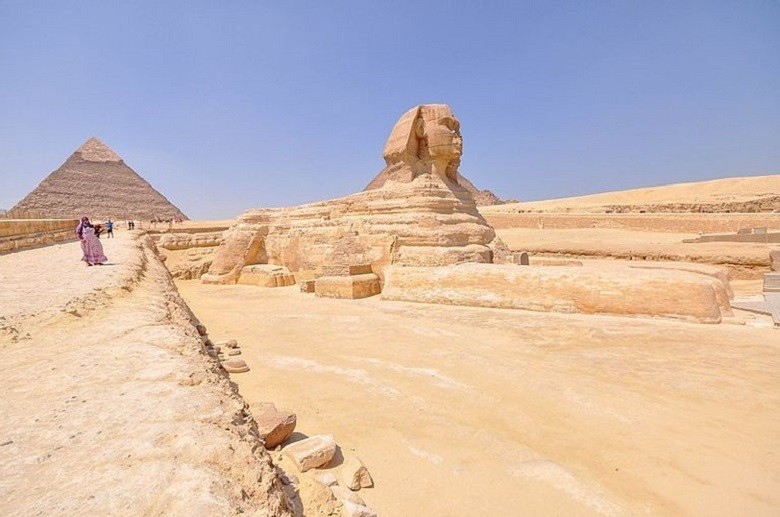
What could such a structure have endured over time? To find answers, one may need to dig deeper, perhaps even beneath the Sphinx itself.
Sturdy foundation
The creation process of the Sphinx was a complex undertaking. Skilled craftsmen carved its form directly into the rock and later refined the details with layers of limestone. Over time, the Sphinx became buried by desert sand, which covered much of its limestone facade.
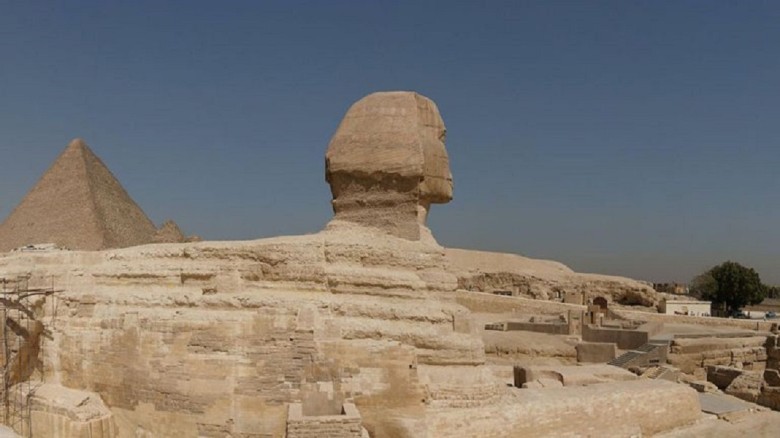
While the sand acted as both preserver and eraser, wiping away some of the limestone details, the core of the Sphinx remained untouched. Digging beneath the Sphinx carries risks; after all, there are legends that speak of a mysterious portal there.
Hall of Records
There are stories that beneath the sand surrounding the Sphinx lies a hidden "Hall of Records." The idea of a secret chamber protecting the secrets and chronicles of ancient Egypt is fascinating.

Without concrete archaeological evidence and in the face of restrictions against excavations under the Sphinx, this legendary hall remains a mystery. But what could this "Hall of Records" possibly contain?
Great mysteries
Speculations about the contents of the Hall of Records are diverse. Some scholars and enthusiasts believe it could house ancient scrolls and manuscripts documenting thousands of years of history. Others lean more towards the supernatural, speculating that evidence of encounters with extraterrestrials or mysterious rituals could be concealed within.

While conspiracy theories often blur the truth, the fascination with unsolved mysteries from antiquity will always keep the flame of curiosity alive.
Door #4: the Padmanabhaswamy Temple
As one traverses continents and delves into the rich cultural heritage of India, they come across the famous Padmanabhaswamy Temple. While the name may pose a linguistic challenge for many outside of India, its reputation within the country is unparalleled. This stunning temple is a shining example of the depths and beauty of Indian history.

Known as the richest temple in the world, it is a beacon for followers of the deity Maha Vishnu. But beyond its spiritual significance lies a labyrinth of enigmatic chambers forbidden to all.
Hidden vaults
Deep beneath the intricate architecture of the Padmanabhaswamy Temple lie six hidden vaults. Over the years, five of them have been excavated, revealing unimaginable treasures. It is fascinating to ponder what the ancient walls of this temple conceal.
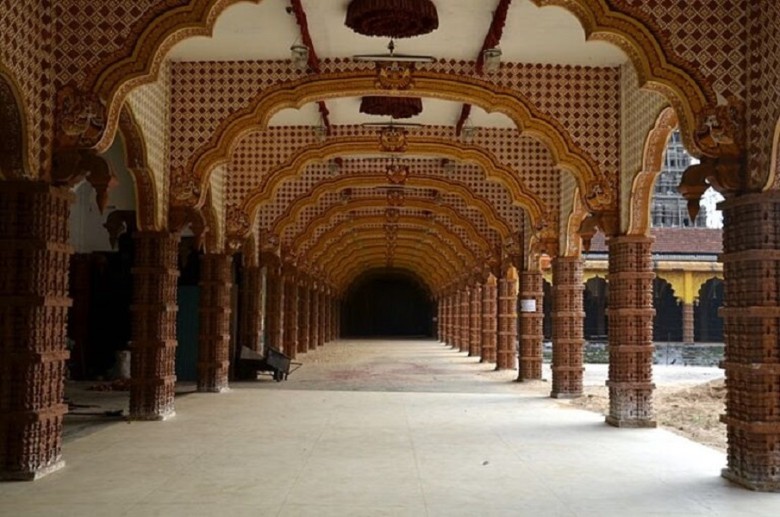
However, one vault has resisted discovery to this day, preserving its secrets for countless generations. What could this final vault hold, whether it be treasures or mysteries? Clues may lie in a groundbreaking discovery made just a few years ago.
Hidden treasure
In 2015, researchers and explorers stood in awe before one of the temple's vaults, containing treasures worth an incredible one trillion US dollars! Such unparalleled wealth garnered worldwide attention, making this place a center of curiosity and fascination.
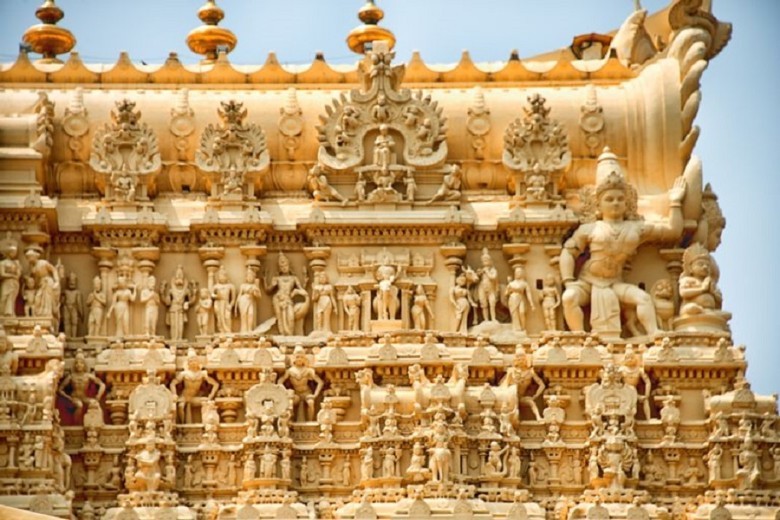
Treasure hunters and archaeologists alike vie for the chance to uncover the wonders of the last sealed chamber. But legends suggest that this elusive door may have been opened in the past.
Curses abound
Local lore and the temple's custodians, the royal family, speak of a curse guarding the final vault. Some legends speak of a door that leads directly to the Arabian Sea and has the potential to flood the entire temple complex if disturbed. It is a sense of mystery that surrounds this vault.
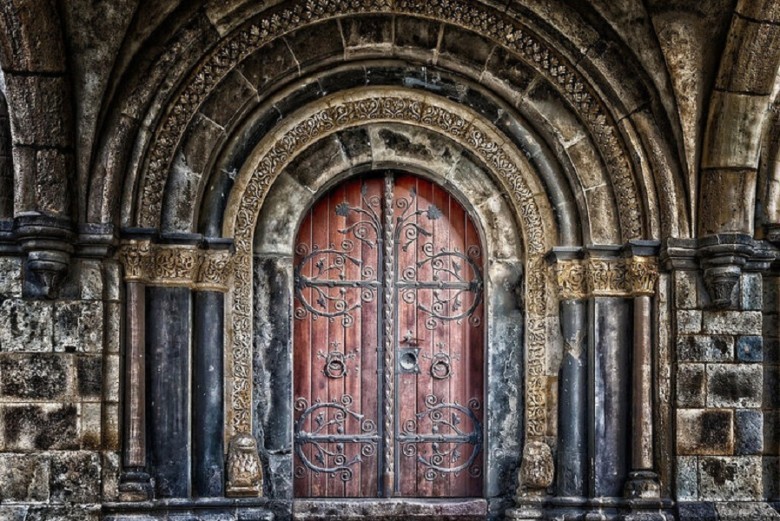
However, if this chamber was indeed accessible in the past, the royal family may be hiding its contents not just out of fear of flooding.
The price to pay
With the tourism industry hit hard in 2020 due to the global pandemic, the administrators of the Padmanabhaswamy Temple faced financial difficulties. Faced with declining revenues, the lure of a hidden chamber and the possibility of treasures within serves as an attraction for potential visitors.

Tourists, always eager to experience the unknown and mysterious, could be the saviors of the temple. The allure of undiscovered riches and ancient puzzles continues to captivate the imagination, ensuring that the legend of the temple lives on.
Another breathtaking discovery
Treasures from ancient times have the amazing ability to emerge in the most unlikely of places, not just in the depths of hidden temple chambers. A stunning example of this is a Winchester Model 1873 rifle from 1882, which was accidentally found leaning against a tree in the vast Great Basin National Park in Nevada.

Although it sounds like the stuff of legends, its authenticity was undeniable. Originally valued between $35 and $50 in the 19th century, its current worth is an impressive $15,000. Its value lies not only in its monetary worth but also in its testament to the craftsmanship and history of a bygone era.
The James Ossuary
Religious artifacts often have a unique allure and significance. One such profound discovery is the alleged final resting place of James the Just, the brother of Jesus of Nazareth. Discovered in the historic Silwan area of Jerusalem, the authenticity of this artifact is still being examined.
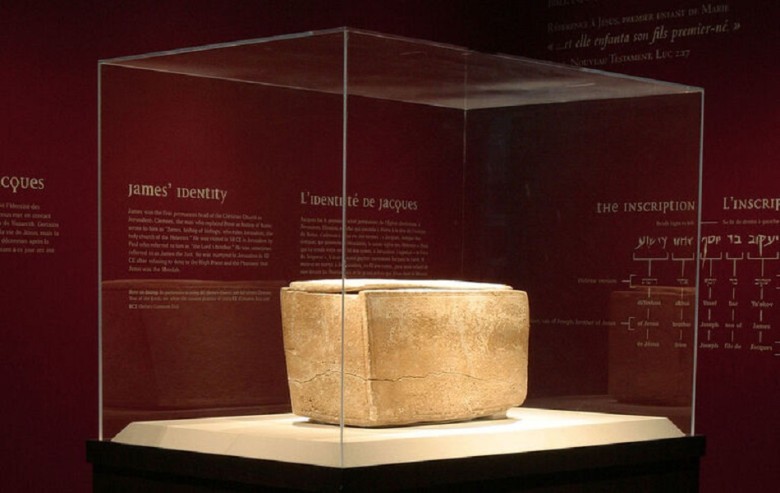
Current estimates place its value at a modest $50,000, considering its potential historical importance. However, the presence of Aramaic inscriptions on its surface enhances its credibility, making it an invaluable artifact for believers and historians alike.
Libyan Desert Glass
Some treasures are born through the most powerful forces of nature. Libyan Desert Glass is one such example, a mineral that is formed exclusively through the raw energy of lightning, the intense heat of volcanic eruptions, or the tremendous impact of meteorite crashes.
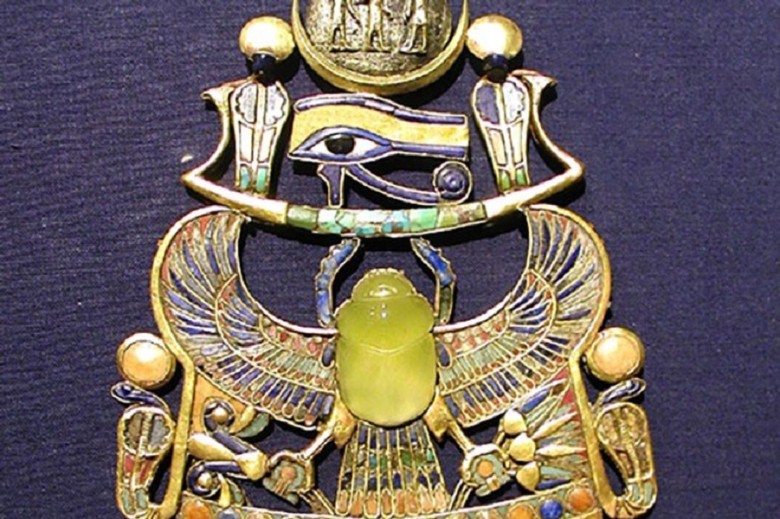
This remarkable substance, found only in the vast deserts of Libya, stands as a testament to the artistic power of nature. A particularly large piece of this incredibly rare material fetched its discoverer a proud $110,000, underscoring the idea that the creations of nature can indeed be priceless.
Ptolemaic Coin
In the realm of ancient currencies, a coin discovered in Israel in 2010 holds a special place. Researchers were quick to deem it the most valuable coin ever found.

Dated to 2,200 years ago, this ancient coin was valued at half a year's salary during its active circulation period. Today, its value stands at $10,000, but its worth for understanding ancient economic structures is priceless.
The Atari Landfill
Not all treasures come from antiquity. After the collapse of the video game industry in 1983, Atari decided to bury its unsold cartridges in the New Mexico desert. A modern mystery that is often discussed to this day.
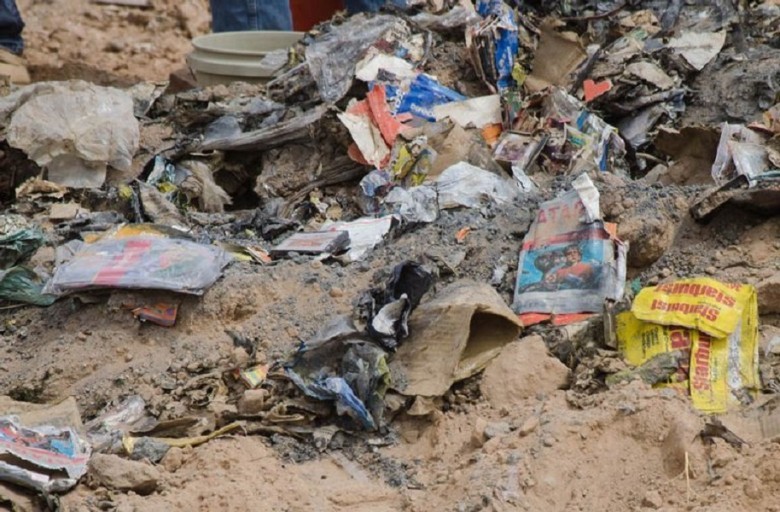
Decades later, this digital graveyard was unearthed, revealing game modules that fetched a total of $108,000 at auctions. This episode starkly reminds us of how technological progress and pop culture can merge to create unexpected treasures.
The Gibeon Meteorite
Meteorites have always fascinated humanity as they represent physical remnants of the universe beyond our planet. One such meteorite that crashed to Earth in ancient times and shattered upon impact was utilized by indigenous communities to create tools and weapons.
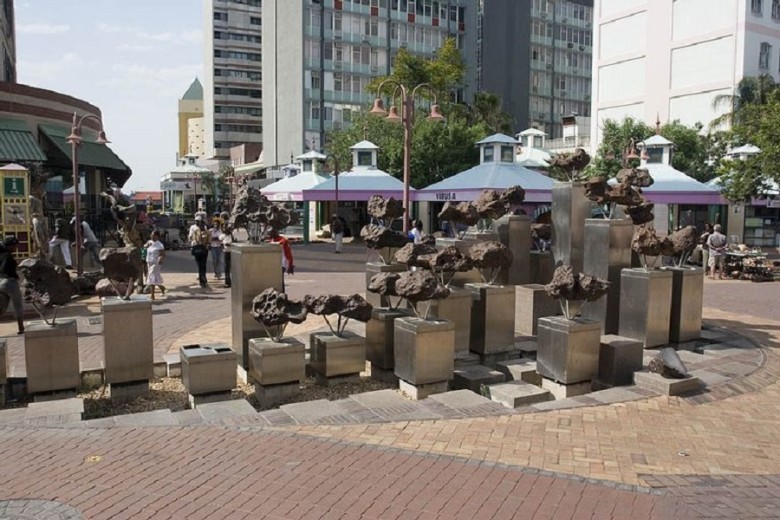
When discoverers transported a fragment to England, it fetched a staggering $383,806. This story underscores the interplay of prehistoric craftsmanship and modern valuation.
The Mother Lode of Death Valley
In a story straight out of a treasure hunter novel, two brave archaeologists stumbled upon a large wooden chest in the arid landscape of California's Death Valley. The desert often holds more secrets than one might think.
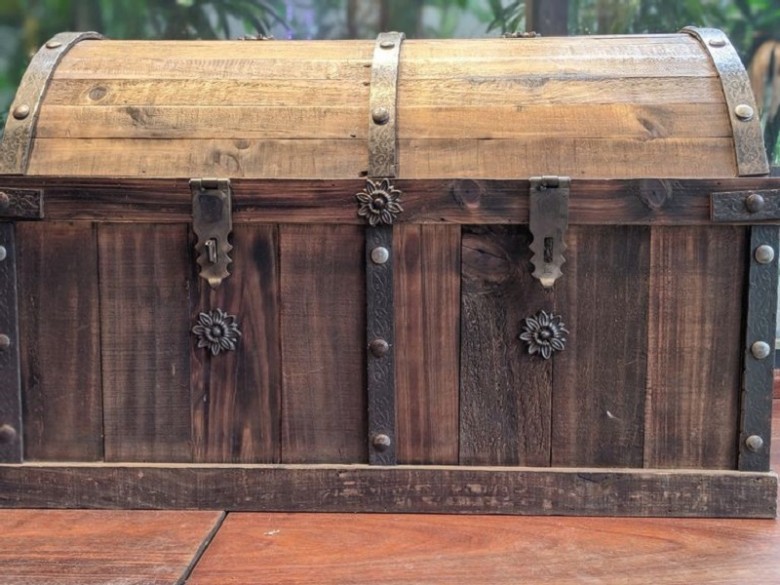
This treasure chest, valued at $500,000, was a true time capsule. Inside were 80 coins, a religious hymn book, tiny baby shoes, a pistol, exquisite ceramics, and a letter from a pioneer whose fate remains unknown.
The Fire of Australia
Australia, with its vast landscapes, has its own treasure stories. One such gem is an impressive opal discovered in the remote desert town of Coober Pedy in South Australia in 1946.

Weighing just under 5,000 carats and roughly the size of two cricket balls, this gem is valued at $675,000. Its shimmer and size make it one of Australia's most coveted possessions.
The Film Set of The Ten Commandments
Even Hollywood has its lost treasures. The set of a film from 1923 was dismantled and buried after production. But in 2014, a monumental sphinx head was unearthed from the shifting sands of Santa Barbara.
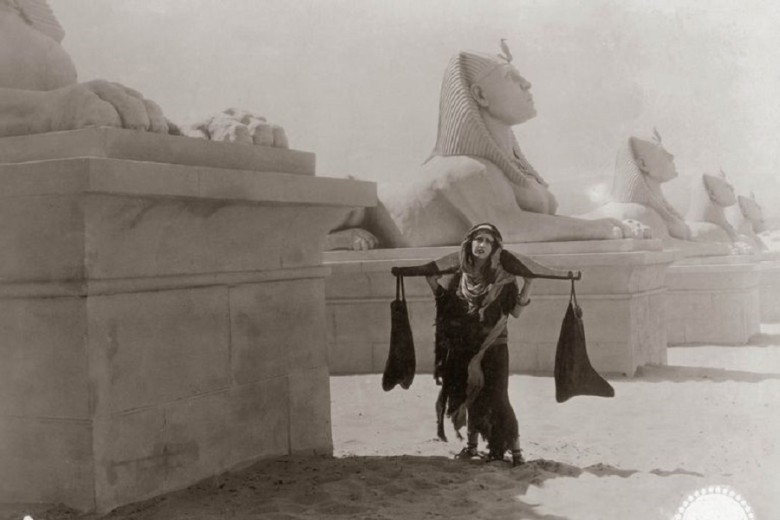
This discovery catalyzed efforts to excavate an entire "lost" film city. While the original costs remain a mystery, its current value is estimated at around $1 million, combining cinematic artistry with archaeological wonder.
Ferrari Enzo
Dubai, synonymous with wealth, also has its own secrets. In a land where supercars are often as commonplace as regular vehicles, the abandonment of a $1.1 million Ferrari Enzo in the desert stands out. A mystery amid luxury.
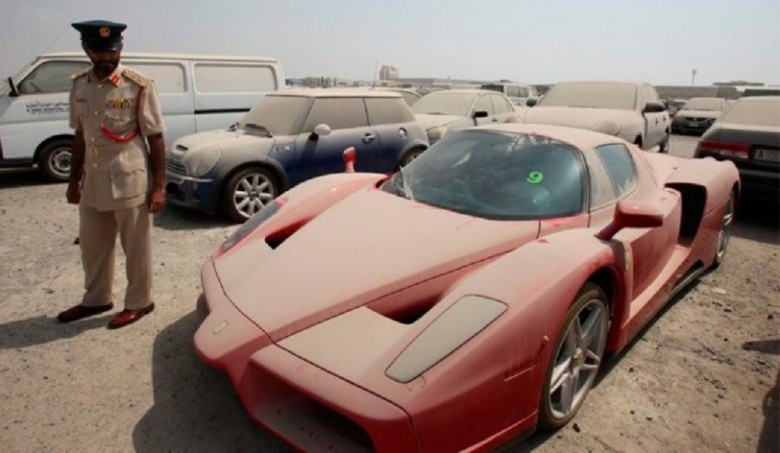
Local rumors suggest that the owner, possibly facing legal troubles, left this engineering marvel to the sand, merging modern luxury with ancient desert puzzles.
The Boot of Cortez
The world of treasure hunting has witnessed many impressive finds, and the discovery of a special gold nugget in 1989 epitomizes this perfectly. A prospector, equipped with nothing more than a simple RadioShack metal detector, stumbled upon a glimmering piece of pure gold. This monumental find weighed an incredible 389.4 troy ounces, securing its status as the largest existing gold nugget in the Western Hemisphere.
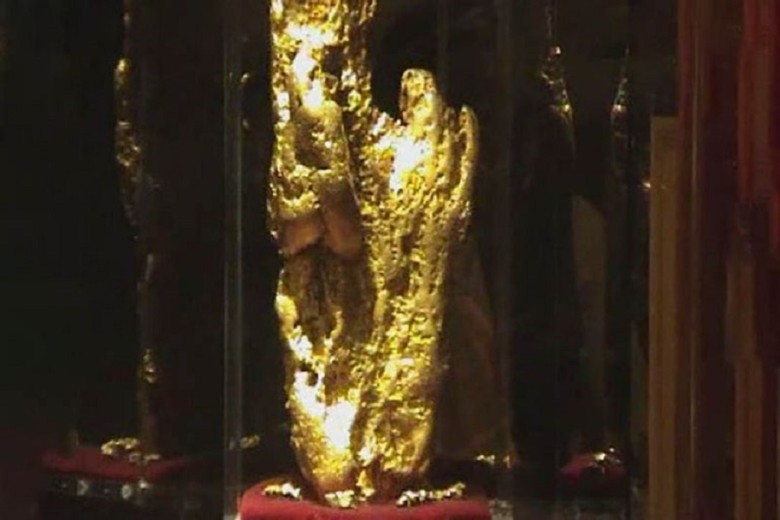
Its market value of $1.5 million speaks volumes about its significance, but even this monumental discovery pales in comparison to another artifact that has fascinated historians for centuries.
The Death Mask of Tutankhamun
King Tutankhamun, or as he is commonly known, King Tut, has always captured the imagination of historians, scholars, and treasure enthusiasts worldwide. His untimely death at a young age and the subsequent discovery of his treasure-filled tomb make for a captivating narrative.
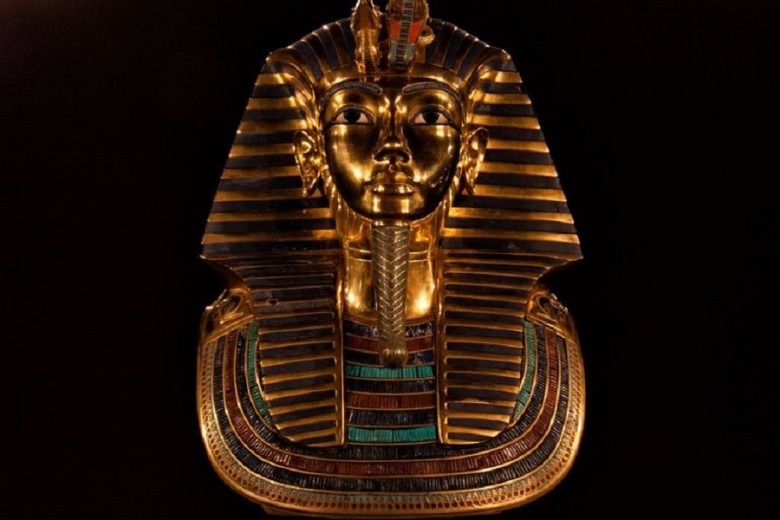
The centerpiece of this archaeological wonder is undoubtedly King Tut's mask and sarcophagus, together worth a staggering $2 million. This places them in a league of their own, surpassing the value of many other legendary archaeological discoveries.
Peg Leg's Black Gold
In the annals of treasure hunting, the story of Peg Leg Smith and his stash of black gold holds a legendary place. In 1965, a mysterious prospector claimed to have found this treasure.

This find, currently estimated at an impressive $3 million, has inspired countless expeditions by other treasure enthusiasts hoping to locate the mythical lost mine associated with Peg Leg's legend. Each new search reignites the allure and mystery of this legendary treasure.
The Bom Jesus
Fate often has a peculiar way of revealing the past, as discovered by a group of De Beers mine workers. During their regular excavation work, they stumbled upon an astonishing find at the bottom of a now-dry lagoon. A sunken ship, believed to have once belonged to the Portuguese monarch according to historical records, lay untouched for 500 years.
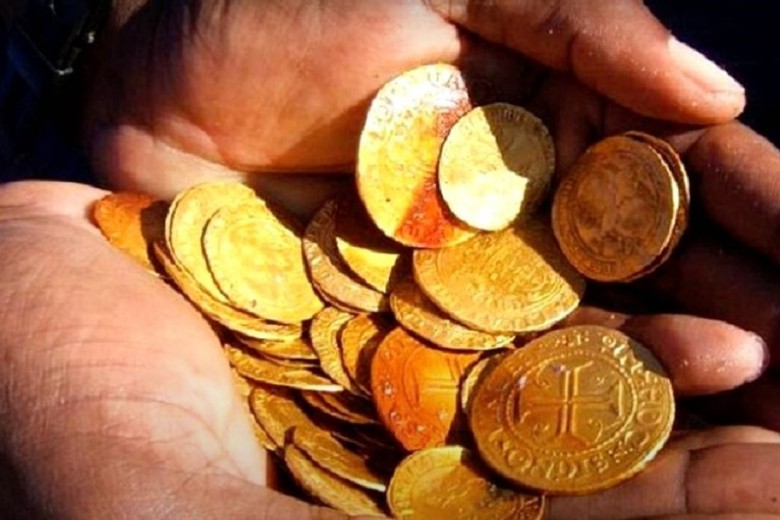
An amazing collection of treasures, including gold, tin, ivory tusks, and an incredible 44,000 pounds of copper ingots, estimated to be worth a total of $13 million. This wealth attests to the splendor and value of ancient civilizations.
Shell Documents
Corporate secrets can have their pitfalls, as Shell Company found out in 1992. After an unfortunate oil spill in Midland, Texas, the company decided to sell the affected pipeline and discreetly bury the evidence in the nearby desert.

However, the hidden documents came to light and plunged Shell into a whirlwind of legal challenges. What was the outcome? The company was forced to pay a massive $60 million in litigation costs, marking a turning point in corporate accountability.
Delta Treasure
The year 2005 witnessed another fascinating chapter in the realm of treasure discoveries. Scott Taylor, after uncovering a significant treasure, chose secrecy over disclosure, suspicious of the intentions of the US government. This secret treasure allegedly included 280 gold bars, two rifles from the Civil War era, a classic six-shooter revolver, and a load of dynamite.

Its estimated value amounted to an incredible $100 million. Taylor's decision to keep the location secret remains one of the most compelling enigmas in modern treasure hunting.
Chinese Aluminum Stash
The search for strategic resources sometimes yields astonishing finds. An American aluminum magnate, upon hearing of a massive stash of aluminum hidden by China in the Mexican desert, chartered a flight to verify this claim.
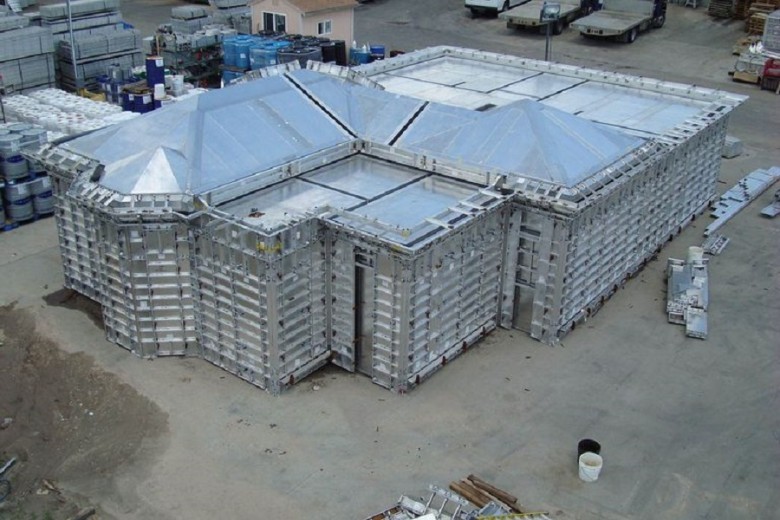
To his astonishment, he stumbled upon a stockpile representing almost 6% of global aluminum reserves. With a market value of $2 billion, this find could produce an incredible 77 billion beer cans, underscoring its immense scale.
Shell Documents
Corporate secrets can have their pitfalls, as Shell Company found out in 1992. After an unfortunate oil spill in Midland, Texas, the company decided to sell the affected pipeline and discreetly bury the evidence in the nearby desert.
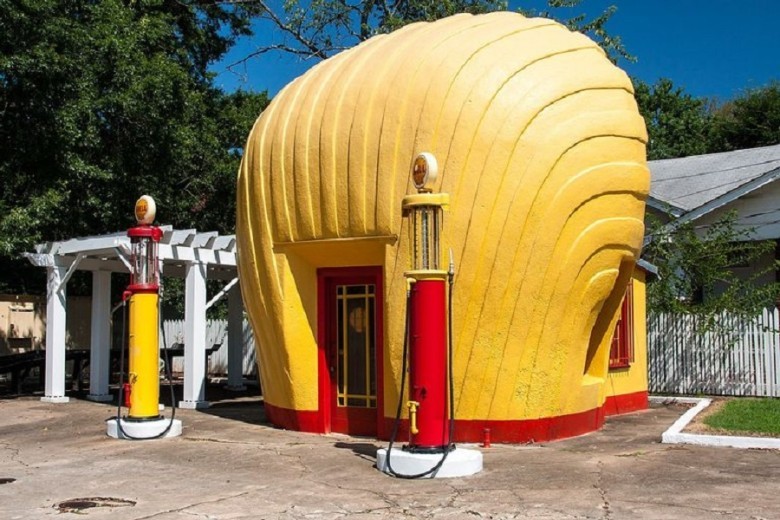
However, the hidden documents came to light and plunged Shell into a whirlwind of legal challenges. What was the outcome? The company was forced to pay a massive $60 million in litigation costs, marking a turning point in corporate accountability.
Delta Treasure
The year 2005 witnessed another fascinating chapter in the realm of treasure discoveries. After uncovering a significant treasure, Scott Taylor chose secrecy over disclosure, suspicious of the intentions of the US government. This secret treasure allegedly included 280 gold bars, two rifles from the Civil War era, a classic six-shooter revolver, and a load of dynamite.

Its estimated value amounted to an incredible $100 million. Taylor's decision to keep the location secret remains one of the most compelling enigmas in modern treasure hunting.
Chinese Aluminum Stash
The search for strategic resources sometimes yields astonishing finds. An American aluminum magnate, upon hearing of a massive stash of aluminum hidden by China in the Mexican desert, chartered a flight to verify this claim.
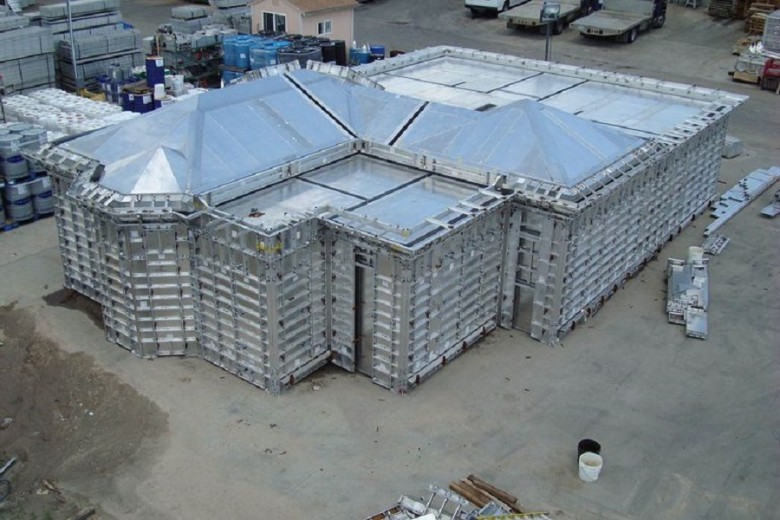
To his astonishment, he stumbled upon a stockpile representing almost 6% of global aluminum reserves. With a market value of $2 billion, this find could produce an incredible 77 billion beer cans, underscoring its immense scale.
Iraqi Fighter Jets
In a search with geopolitical undertones, the quest of American troops for weapons of mass destruction in the Iraqi desert led to an unexpected discovery. Instead of the expected weapons, they found 30 fighter jets buried beneath the desert sand.
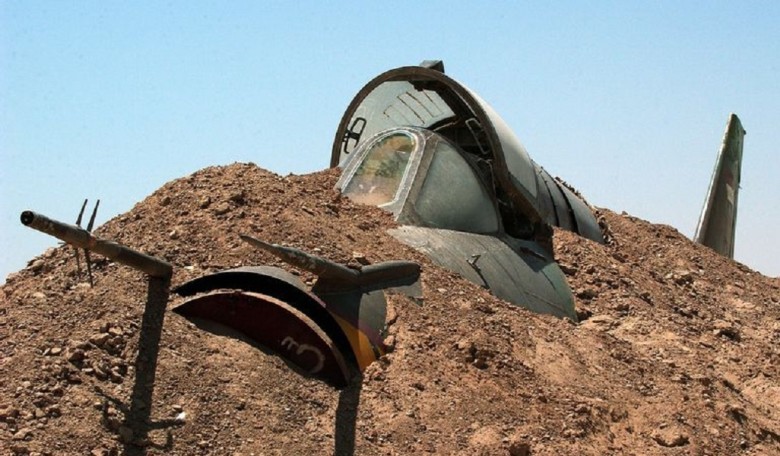
While the exact valuation remains disputed, a conservative estimate places their worth at approximately $300 million. This discovery raises questions about priorities in government spending.












Comments
0 comment